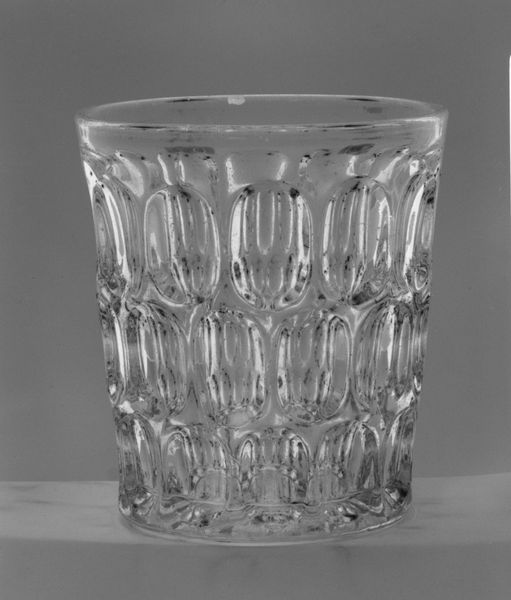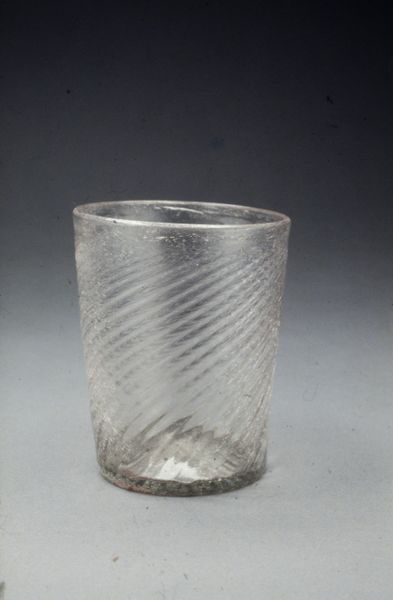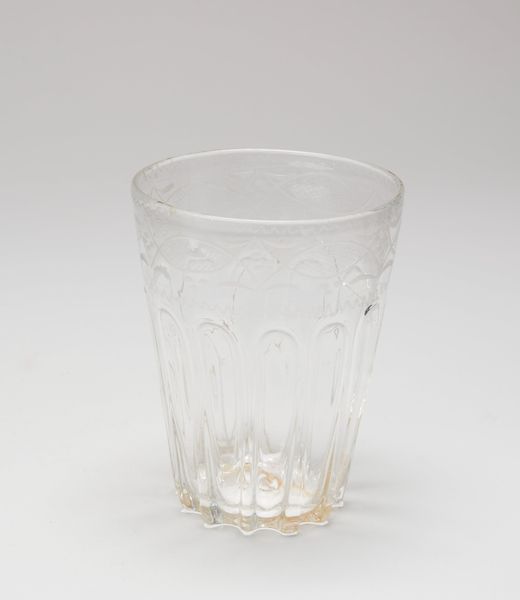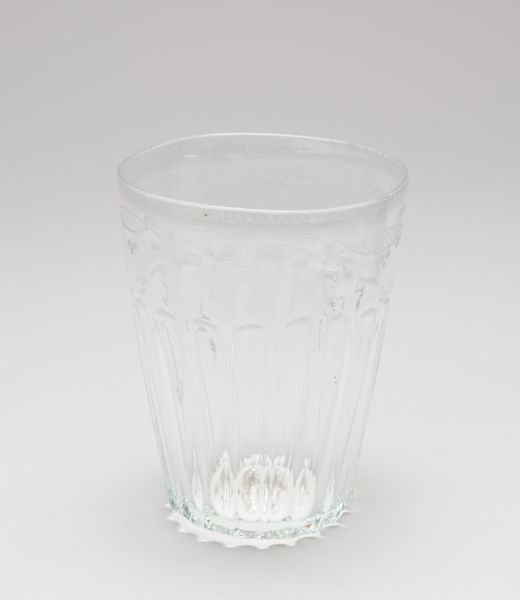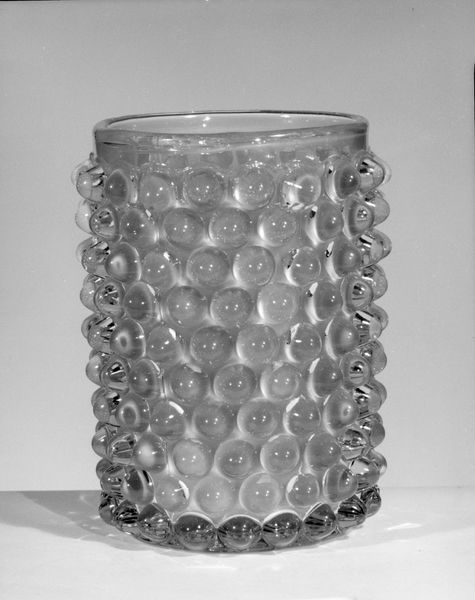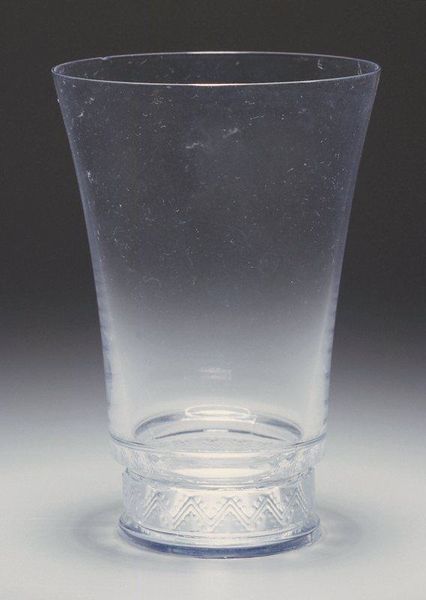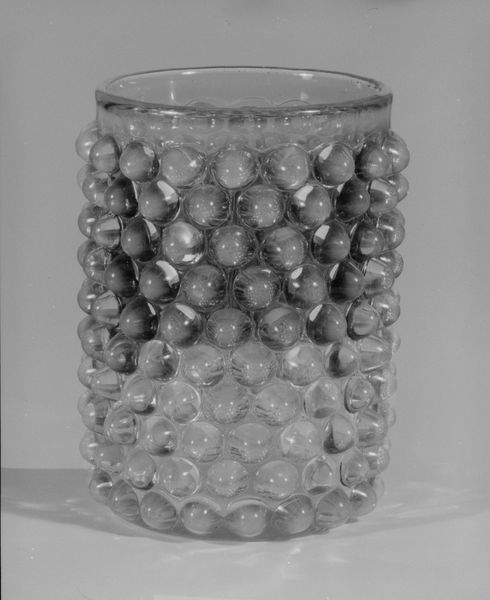
ceramic, glass
#
art-nouveau
#
ceramic
#
glass
#
ceramic
Dimensions: H. 3 3/4 in. (9.5 cm); Diam. 2 1/2 in. (6.4 cm)
Copyright: Public Domain
Curator: Up next, we have a rather charming "Tumbler" crafted between 1880 and 1887 by Hobbs, Brockunier and Company. It's a piece made of glass, and it currently resides here at the Metropolitan Museum of Art. Editor: Well, my first impression is a playful lightness. The subtle pink hue combined with that bubble-like texture gives it an almost ethereal feel, don't you think? Curator: I do. But I find it also offers an opportunity to consider its historical context. The late 19th century was a time of rapid industrialization; such a piece speaks volumes about evolving glass-making technologies and the shifting nature of labor. Editor: That's a salient point. We often forget how industrial changes intersect with daily life. Something like this tumbler would likely have been a relatively mass-produced item accessible to a rising middle class, symbolizing new levels of consumerism. How did this availability of glass items impact social and class relations at that time? Curator: Precisely. Moreover, we can see influences of the Art Nouveau style here, particularly in the emphasis on craftsmanship and ornamentation. The means of producing that bubbly effect most likely involved particular molds, the design and manufacture of which represents another layer of specialized labor and skill. Editor: Considering that it's an object intended for everyday use makes one think of domestic roles, particularly for women. Was the selection of tableware, like this tumbler, a means through which women could exercise some autonomy or creative expression? It really does invite so many intersectional questions. Curator: Absolutely, and I’m compelled to add, thinking about the materiality itself – the chemical composition of that glass. It gives nuance and grounding to the narratives we build around art and society. It shows that every object is made of materials and resources, and they must have an origin that, whether humble or rich, have influenced its history and purpose. Editor: I think that you have encouraged a broader appreciation, considering production, culture and society to discover how everyday items like this offer really quite potent avenues for inquiry and interpretation.
Comments
No comments
Be the first to comment and join the conversation on the ultimate creative platform.


